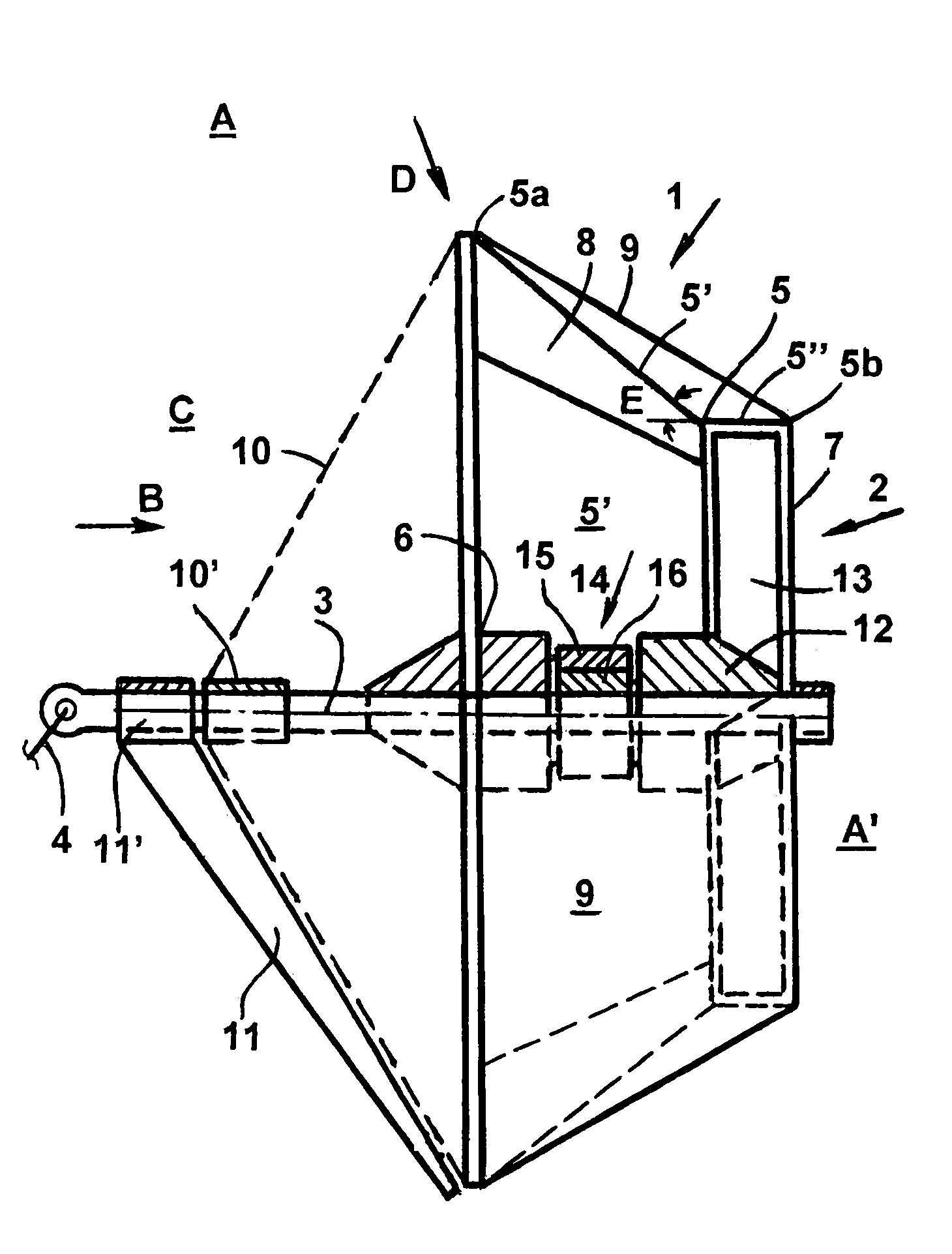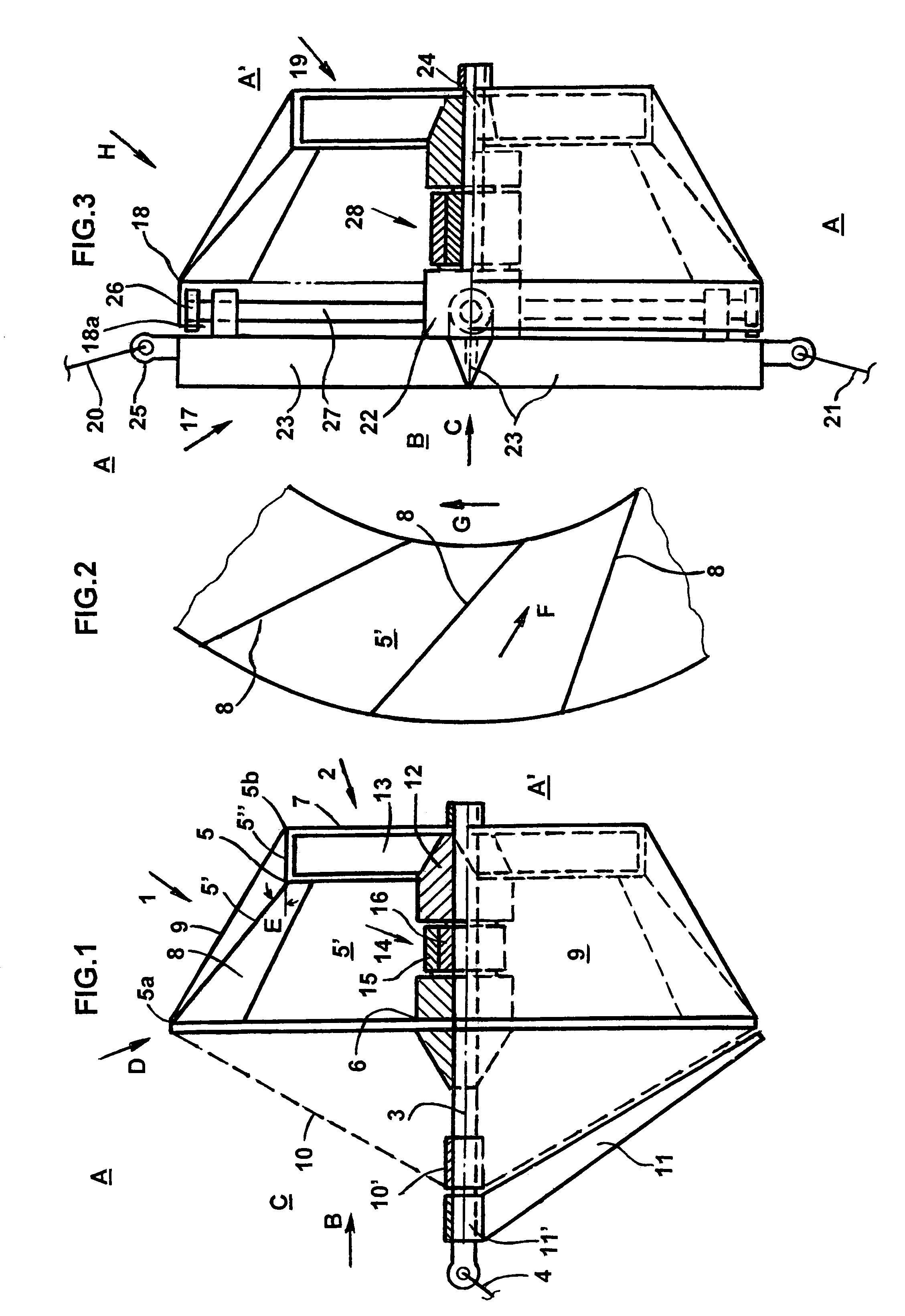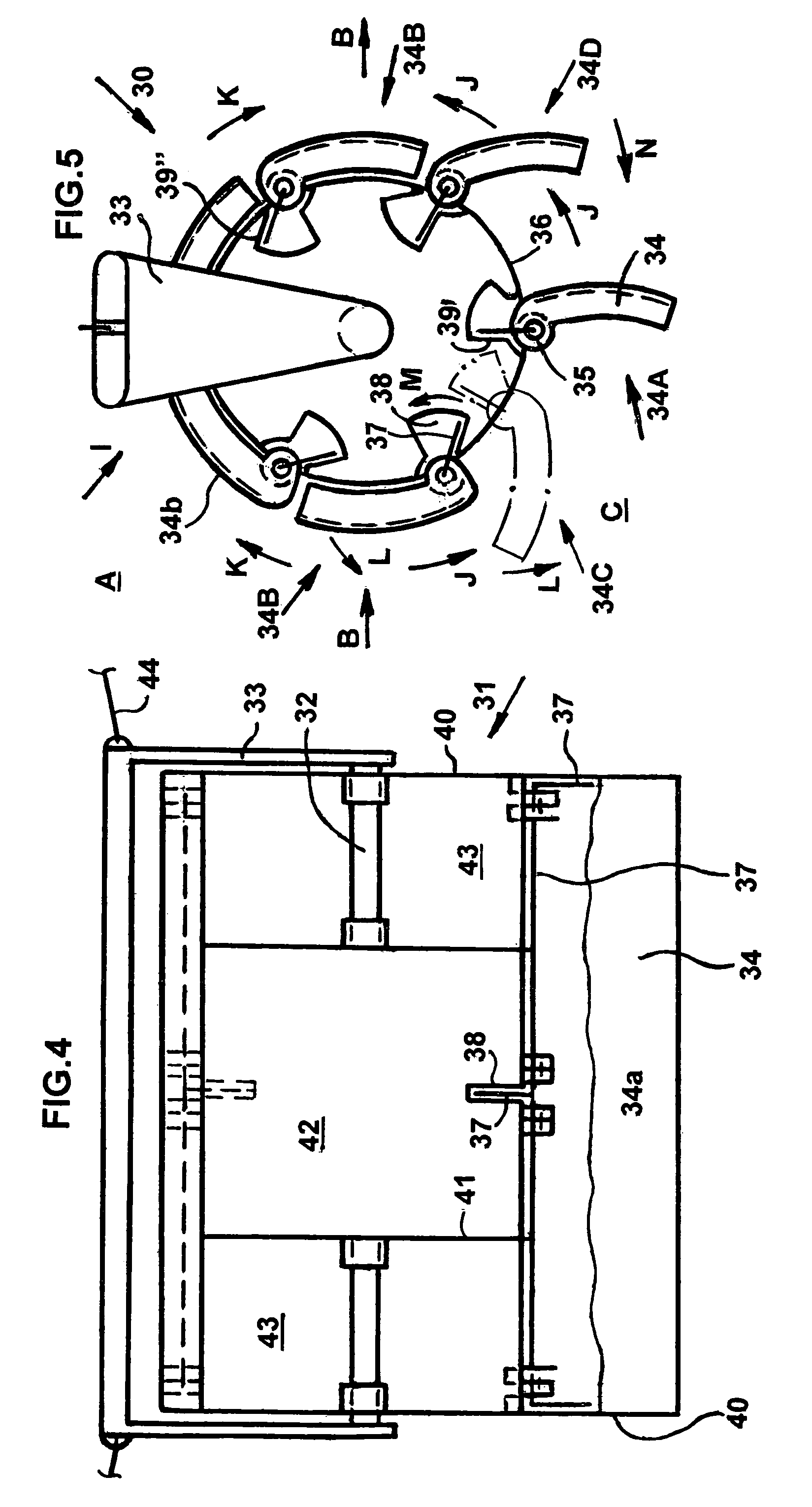Apparatus for receiving and transferring kinetic energy from a flow and wave
a technology of fluid basin and apparatus, which is applied in the direction of hydro energy generation, non-positive displacement fluid engine components, liquid fuel engine components, etc., can solve the problems of absorbing the shock energy of the blades, requiring a rotatory motionless support, and a large shroud capturing the turbines
- Summary
- Abstract
- Description
- Claims
- Application Information
AI Technical Summary
Benefits of technology
Problems solved by technology
Method used
Image
Examples
first embodiment
[0044]the apparatus according to the invention includes a tandem axial fluid turbine unit B as illustrated in FIG. 1, adapted to submerge and capable of being maintained in a path of, the main flow A and comprising a relatively widened, rotatable front axial turbine runner assembly 1 capable of facing, directing and speeding an oncoming fluid flow C; a relatively narrowed, rotatable rear co-axial turbine runner assembly 2; an axially and horizontally disposed, elongate pin member 3 supporting the assemblies 1 and 2 for relative rotation about a central longitudinal axis of the assemblies 1 and 2 and the member 3, the axis being oriented in the direction B, an elongate tether member 4 of a means supporting the unit D in operative positions within the path of the water flow A and described more fully hereinafter, connected with its rear end to the front end of the member 3 provided with a well-known swivel.
[0045]The assembly 1 comprises a funnel-shaped member 5 disposed along the dire...
second embodiment
[0051]the invention is a tandem axial fluid turbine unit H as illustrated in FIG. 3, comprises a vertically disposed, spider-shaped frame 17 for supporting components of the unit H, a front axial fluid turbine runner assembly 18 and a rear axial fluid turbine runner assembly 19, where the assemblies 18 and 19 can be similar in construction to the assemblies 1 and 2 of the unit D, elongate first tether member 20 and second tether member 21 for maintaining the unit H within the path of the flow A in operative positions in relation to the stopper objects (described more fully hereinafter).
[0052]The frame 17 is composed of a central body 22, a plurality, preferably four of the same elongate consoles 23 extended radially from the body 22 horizontally leftward and rightward, and preferably vertically and configured openings therebetween; an axial axle 24 supporting and guiding the assemblies 18 and 19 for rotation, left and right means 25 provided on ends of the horizontal consoles 23 for...
PUM
 Login to View More
Login to View More Abstract
Description
Claims
Application Information
 Login to View More
Login to View More - R&D
- Intellectual Property
- Life Sciences
- Materials
- Tech Scout
- Unparalleled Data Quality
- Higher Quality Content
- 60% Fewer Hallucinations
Browse by: Latest US Patents, China's latest patents, Technical Efficacy Thesaurus, Application Domain, Technology Topic, Popular Technical Reports.
© 2025 PatSnap. All rights reserved.Legal|Privacy policy|Modern Slavery Act Transparency Statement|Sitemap|About US| Contact US: help@patsnap.com



